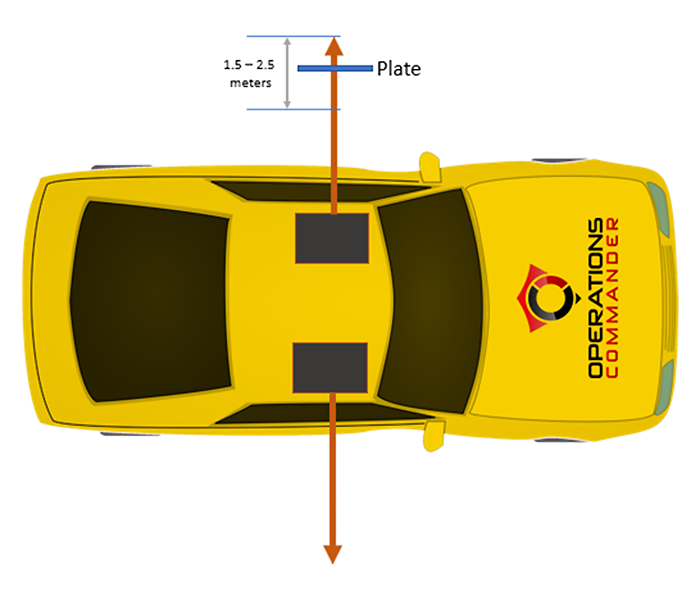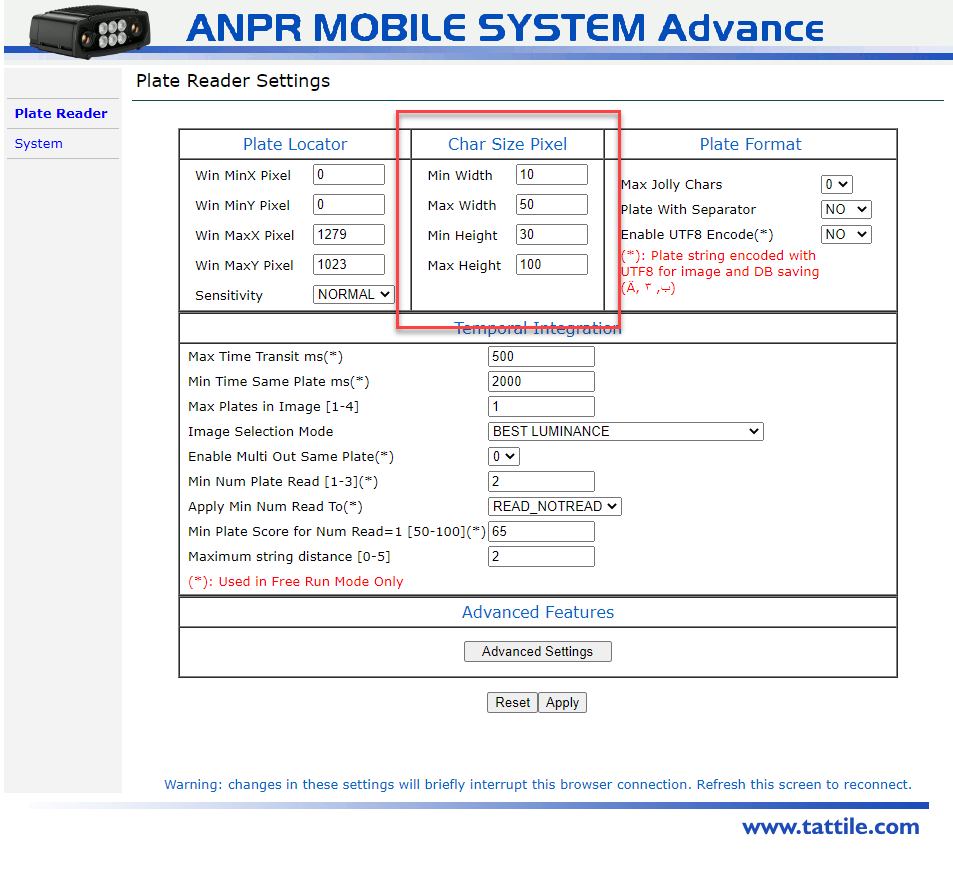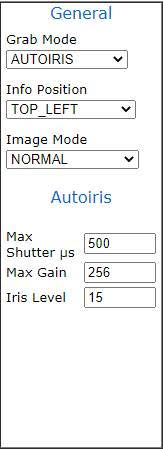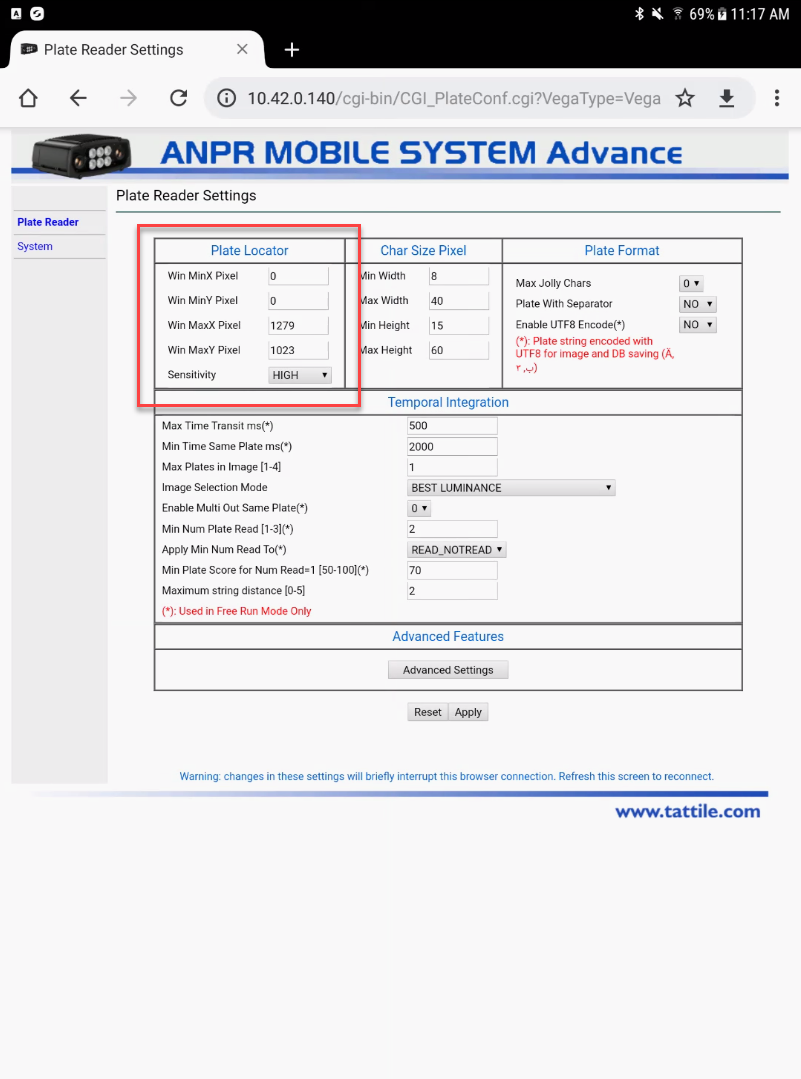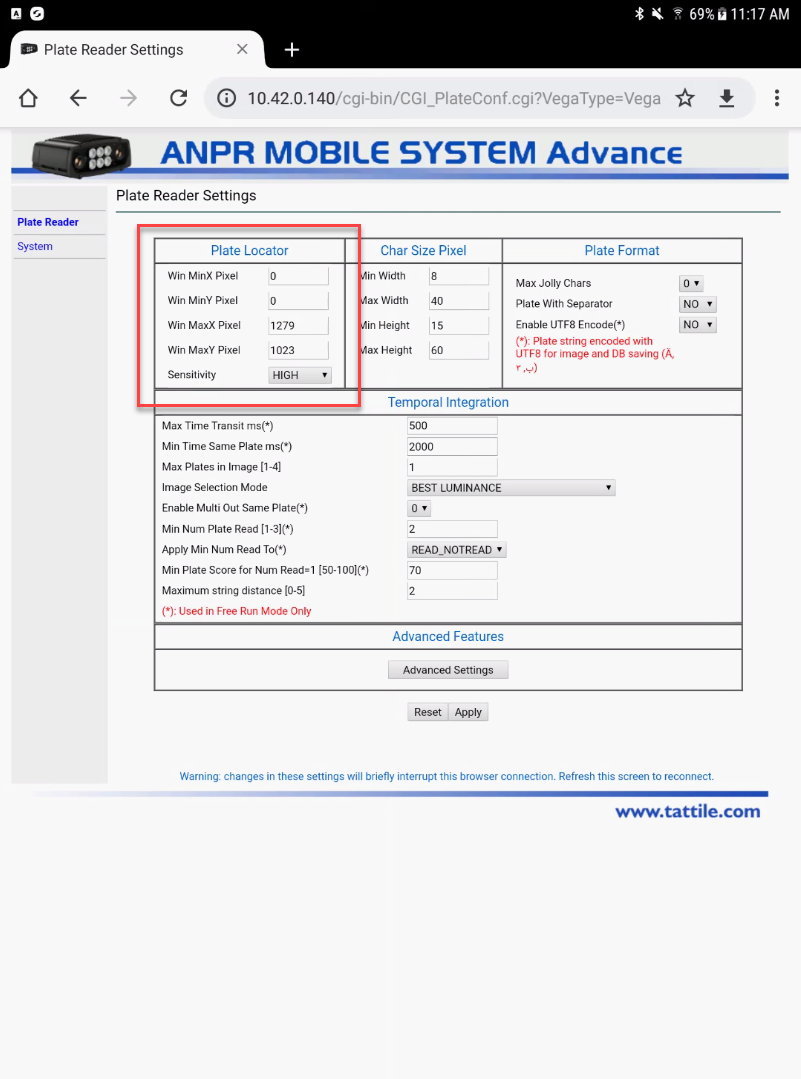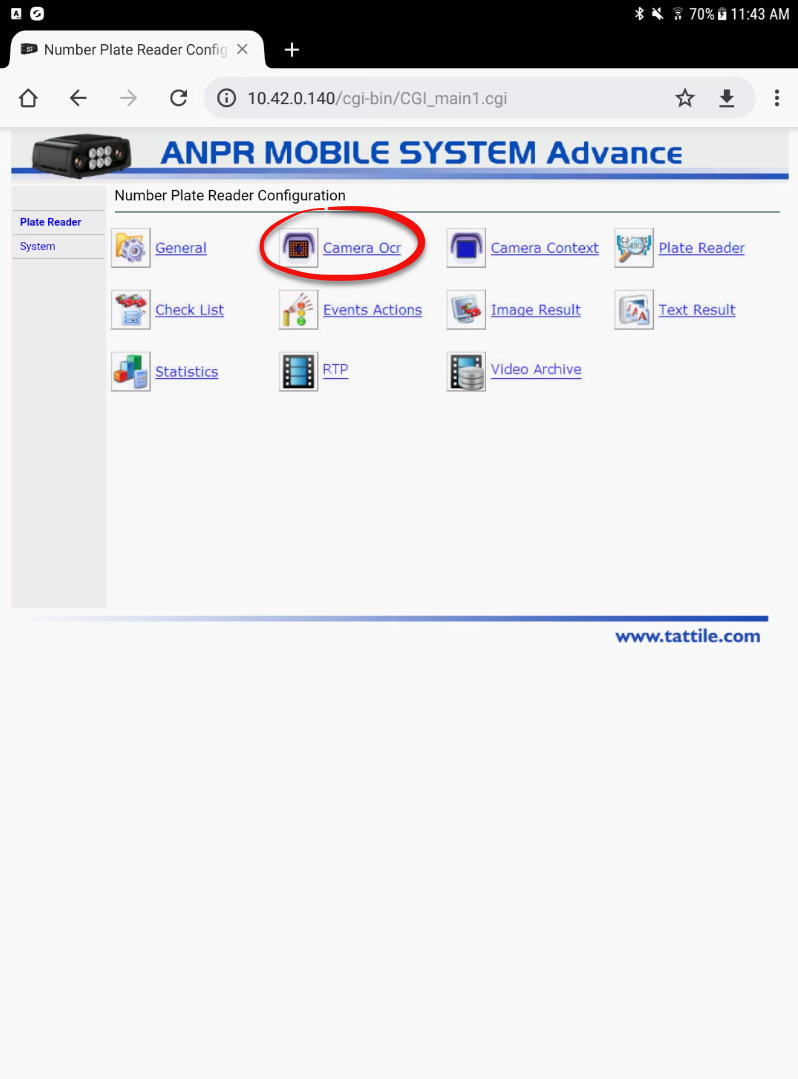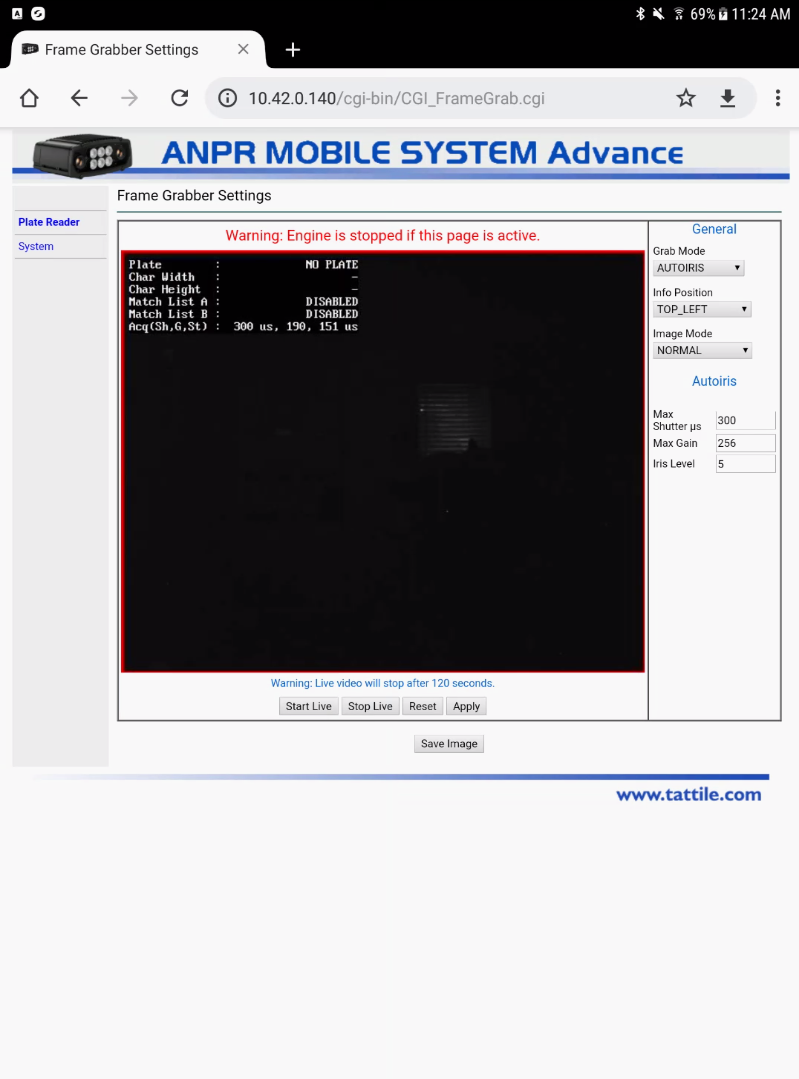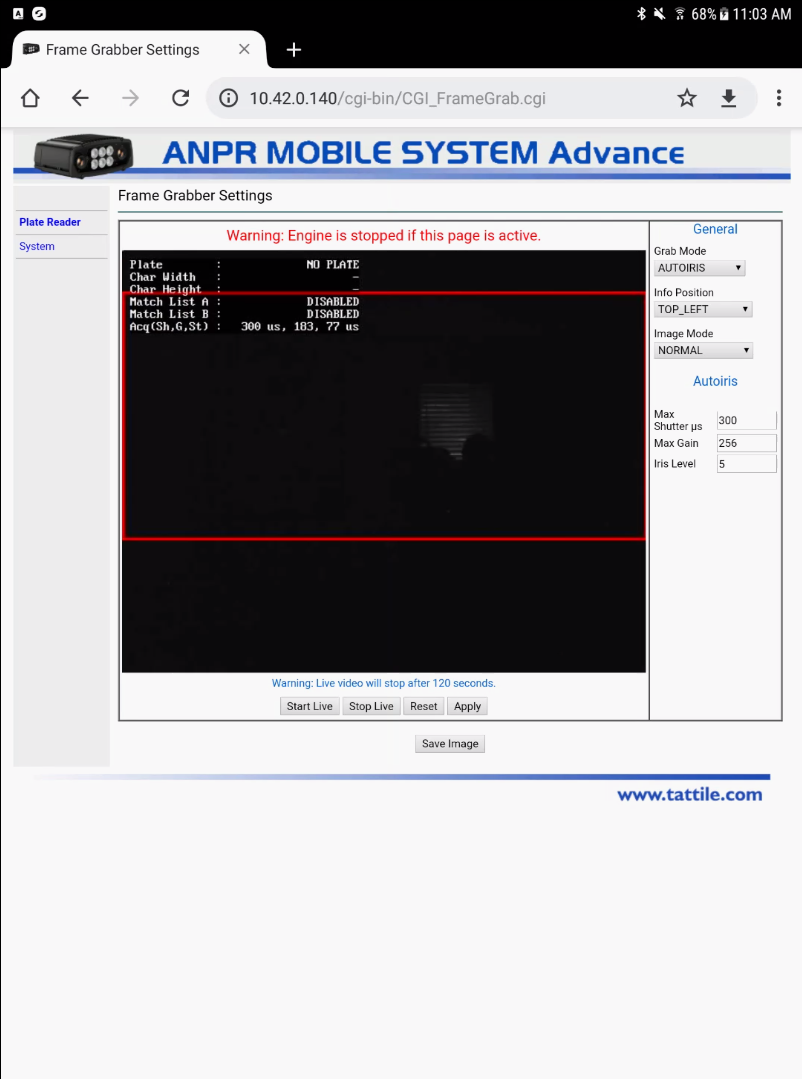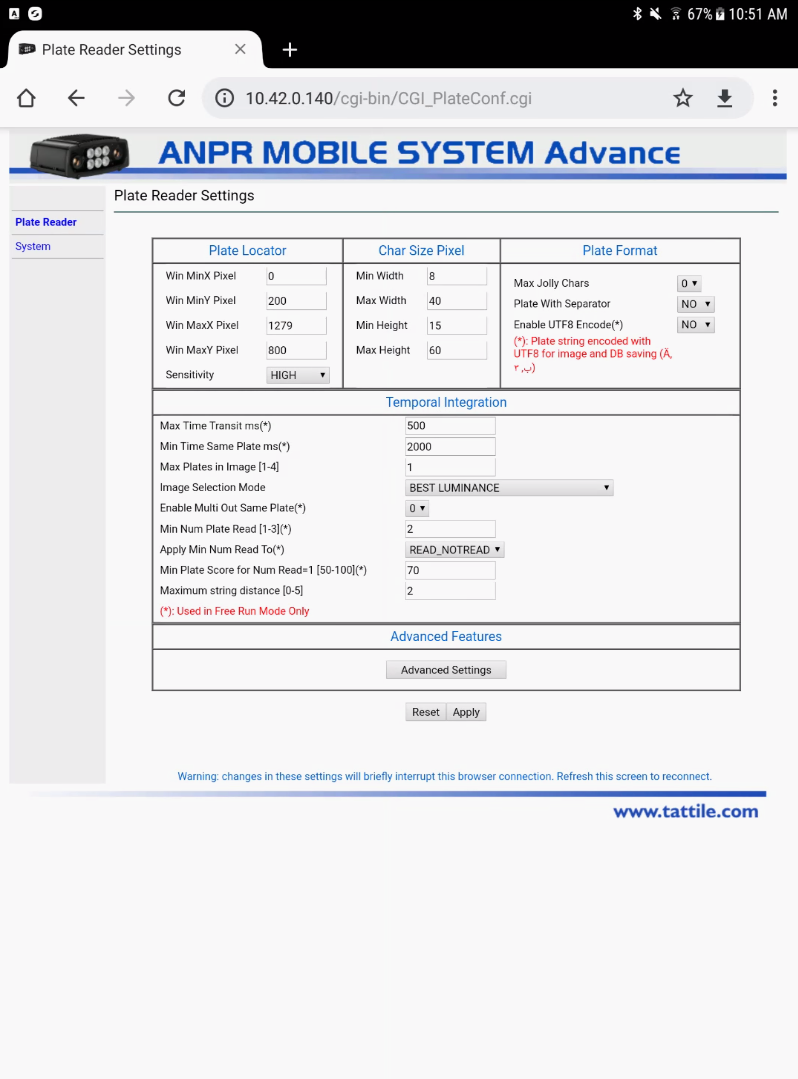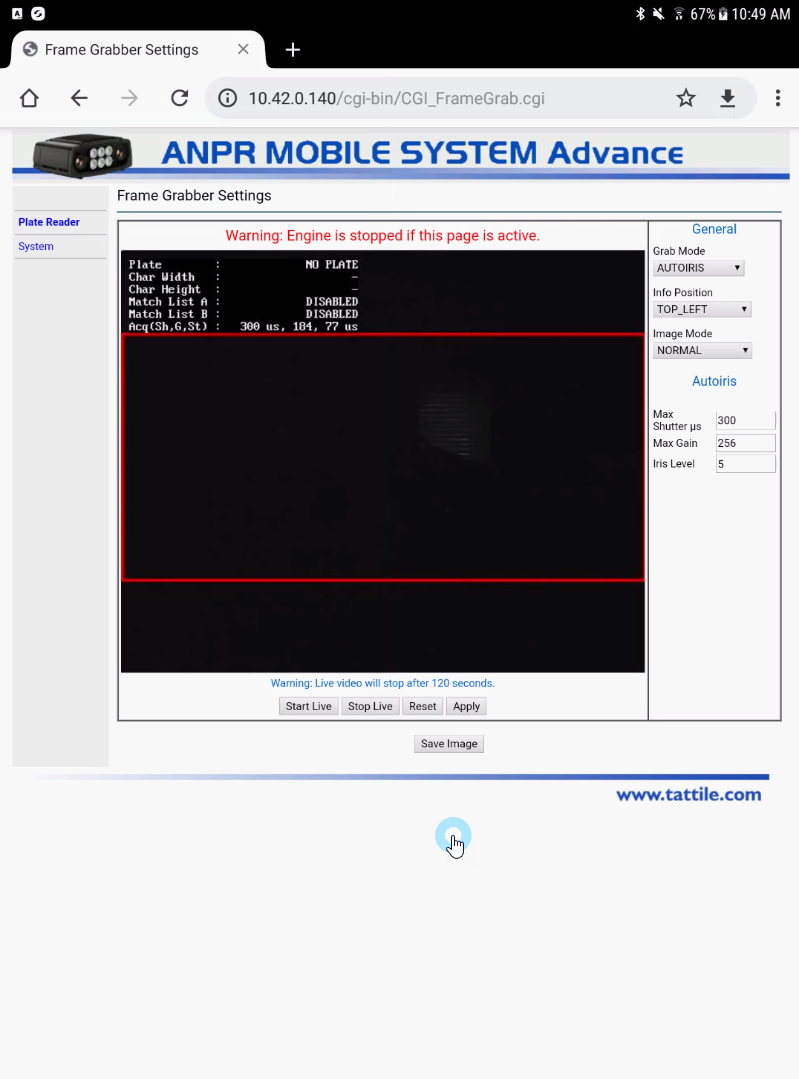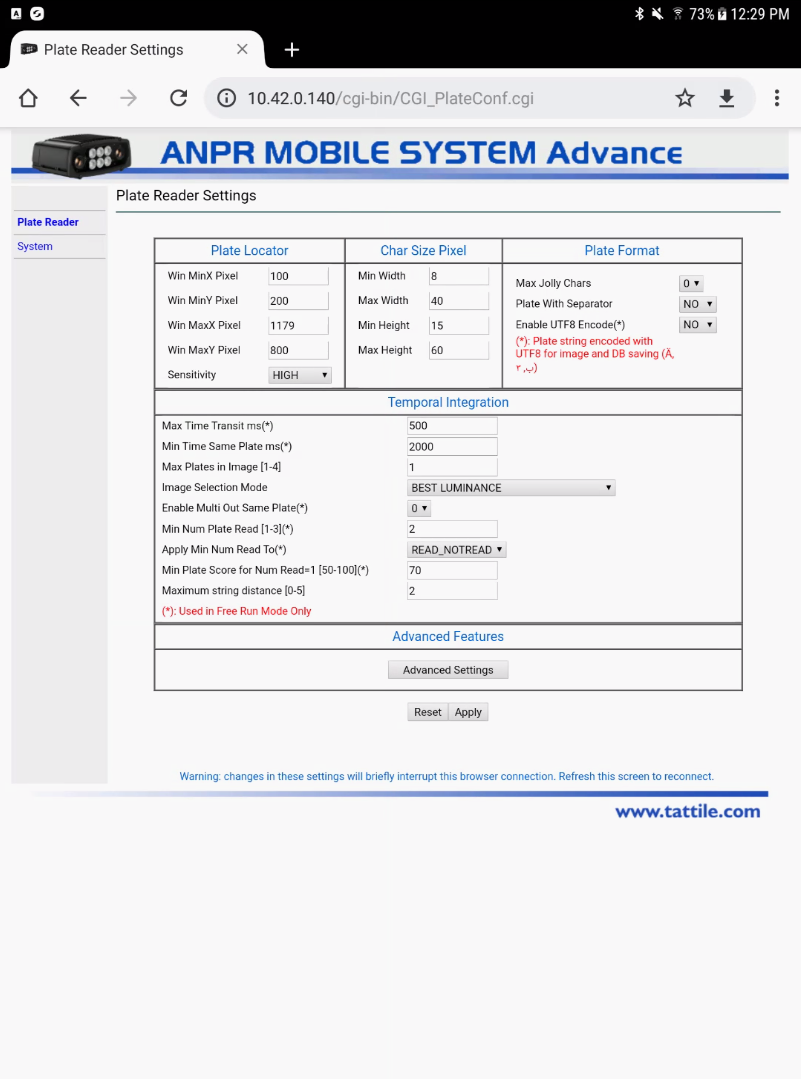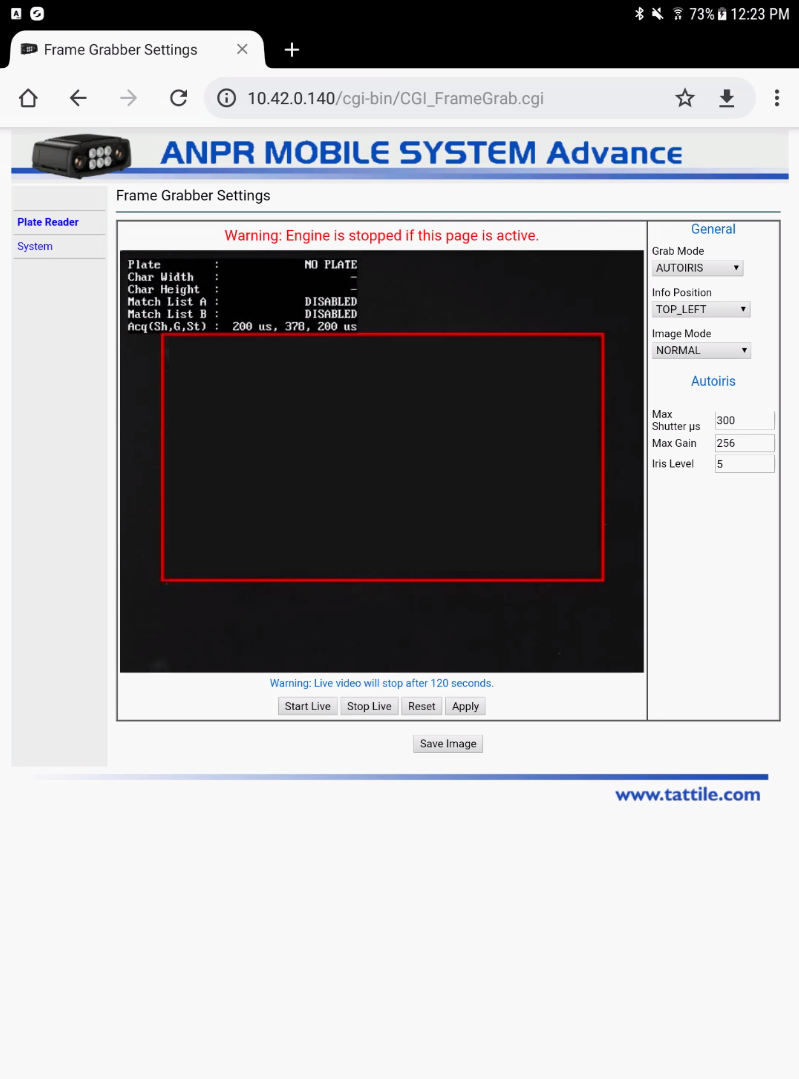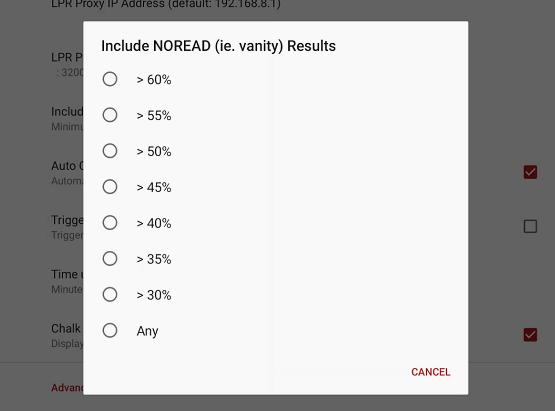Improve LPR Read Rates
What is the optical range for the reader?
The sweet spot for plate reads is 1.5 to 2.5 meters between camera and plate. Also check to make sure the lens is clean. Another issue may be camera angle. The optimum angle for the camera is straight on (parallel) to the plate
Fuzzy Searching
The PL8-RDR system supports fuzzy searching based on user supplied values.
In the case of the LPR system "seeing" ABC123, it will also validate against A8C123 and ABC128 or A8C12B.
Manual Corrections
You can improve plate reads by making corrections and verifying correct plates on the system. OPS-COM has an algorithm that includes the human updates as part of the read score. Therefore, if a plate is misread and corrected, it is very probable that the system will return the (human) updated version.
Further, the system does fuzzy searching... this means it will look for a plate in the system that matches a pattern. For example, a plate of ABC123 may be read as A8C128. With fuzzy searching and based on time of day etc. the system will return ABC123 if that plate has a permit (but will also note that it was a "fuzzy" read of the plate).
If you see a score of 100% in the LPR report that means that the system determined a human updated version was the best match since a score of 100% is theoretically impossible with LPR cameras.
As an Example here's a tweak you can do for Ontario users once the camera is setup...
Go into the Web Interface Page Plate Reader Camera OCR and set the following Characters dimensions:
CHAR SIZE Min W: 10 Max W: 50 Min H:30 Max H: 100
Improving Exposure
For dark plate reads:
Set Max Shutter to 500
Set Max Gain to 256 (If images are too dark this setting can be increased. However it is not recommended to go over 1000.)
Set Iris Level to 15
Adjusting the Bounding Box
The LPR camera has the ability to customize the area that is being analyzed during the plate read. This article explains how to adjust the read area (Bounding Box).
The bounding box refers to the area that can be adjusted to narrow the view or area that is analyzed by the LPR camera.
The settings involved are located in the Plate Reader Settings.
The default settings for full frame are as follows. Measurements for height are always considered the distance from the top of the screen. Measurements for width are based on distance from the left of the screen
Win MinX Pixel - 0 (From the left)
Win MinY Pixel - 0 (from the top)
Win MaxX Pixel - 1279 (From the left)
Win MaxY Pixel - 1023 (from the top)
To view the location of the bounding box go into the Camera OCR tab.
Here is the full frame view of the bounding box. See the red outlined box in the image below.
Adjusting Height
To adjust the box edit the number in the settings. In this case we will narrow the bounding box in height to restrict the read area.
Here are the settings:
Win MinX Pixel - 0 (from the left)
Win MinY Pixel - 100 (from the top)
Win MaxX Pixel - 1279 (from the left)
Win MaxY Pixel - 700 (from the top)
IMPORTANT
Once the settings are changed and you click on Apply, the camera will reboot. This process will take a couple of minutes to complete before you can navigate away from the page.
The resulting Bounding Box will look like this:
Let's now say we want to lower the box in the view. I would have to increase the values in both Y axis settings.
Here are the settings
Win MinX Pixel - 0 (from the left)
Win MinY Pixel - 200 (From the top)
Win MaxX Pixel - 1279 (from the left)
Win MaxY Pixel - 800 (From the top)
Here is the resulting bounding box:
Adjusting Width
Additionally you can narrow the width of the bounding box if need be. In this case we will narrow the bounding box by 100 pixels on both sides.
Here are the settings
Win MinX Pixel - 100 (from the left)
Win MinY Pixel - 200 (From the top)
Win MaxX Pixel - 1179 (from the left)
Win MaxY Pixel - 800 (From the top)
Here is the resulting bounding box.
By selective use of these settings you can customize the area that is processed by the LPR read. As a result LPR reads could be faster and more accurate since the camera is reading a smaller more focused area and ignores anything outside of the bounding box.
On the Handheld
For NOREADs you can check the setting in System Settings to see if that can be reduced.
It may mean more noise, but it may also help with determining what is going on (ie. reading but not seeing it as a READ result)
To adjust this setting go into system settings and tap on Include NOREAD (ie. vanity) Results
Set the percentage to 50% to start. We can tweak it once we see how the system reacts.


